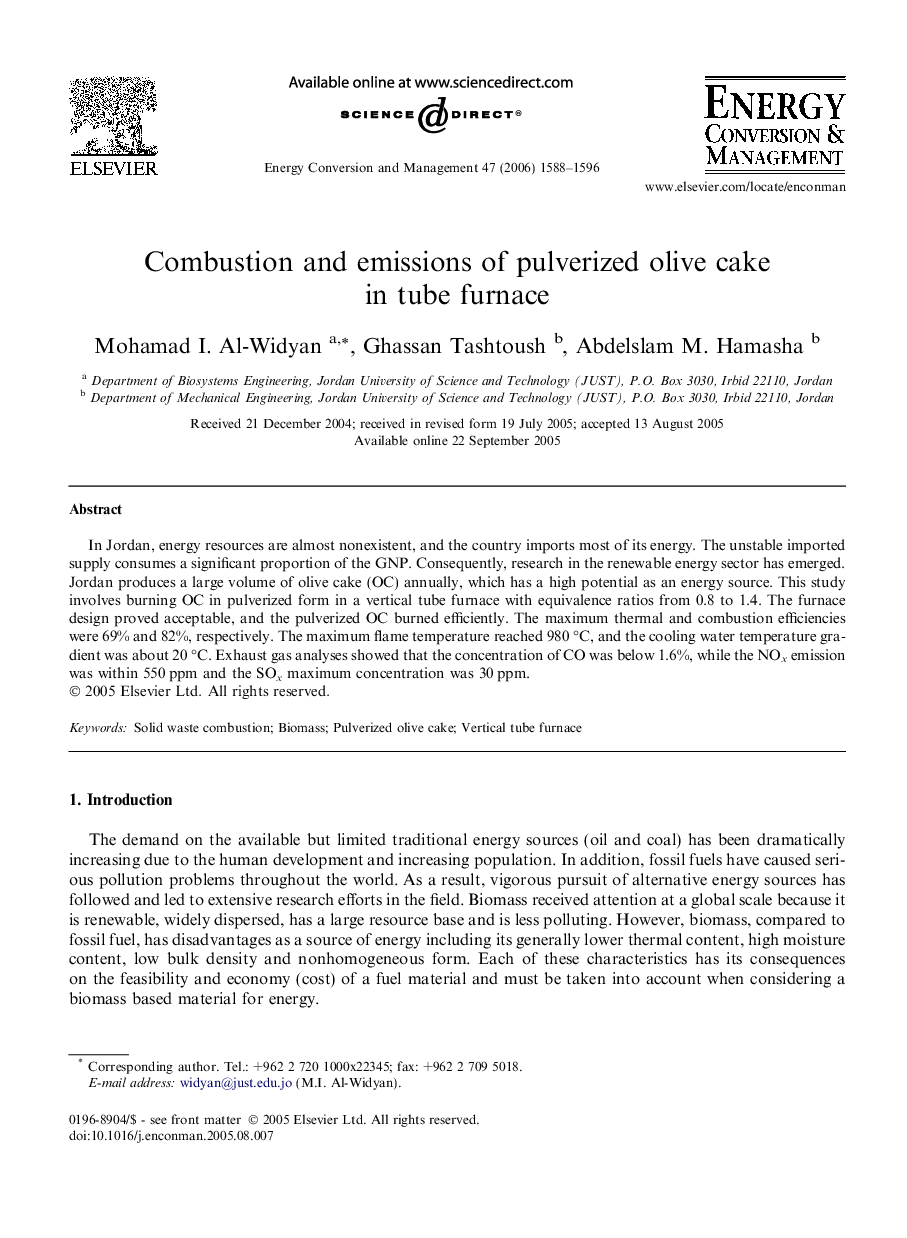| Article ID | Journal | Published Year | Pages | File Type |
|---|---|---|---|---|
| 762382 | Energy Conversion and Management | 2006 | 9 Pages |
In Jordan, energy resources are almost nonexistent, and the country imports most of its energy. The unstable imported supply consumes a significant proportion of the GNP. Consequently, research in the renewable energy sector has emerged. Jordan produces a large volume of olive cake (OC) annually, which has a high potential as an energy source. This study involves burning OC in pulverized form in a vertical tube furnace with equivalence ratios from 0.8 to 1.4. The furnace design proved acceptable, and the pulverized OC burned efficiently. The maximum thermal and combustion efficiencies were 69% and 82%, respectively. The maximum flame temperature reached 980 °C, and the cooling water temperature gradient was about 20 °C. Exhaust gas analyses showed that the concentration of CO was below 1.6%, while the NOx emission was within 550 ppm and the SOx maximum concentration was 30 ppm.
